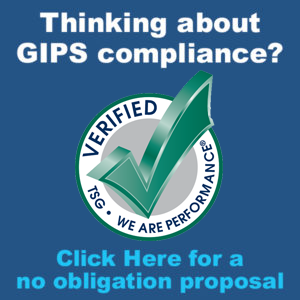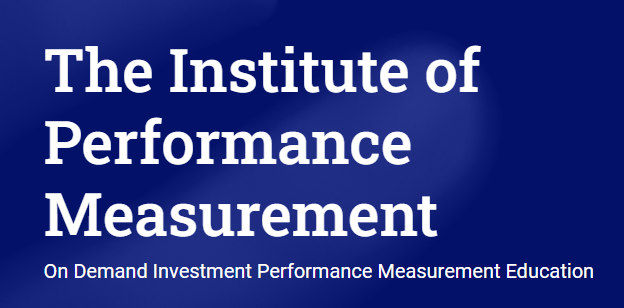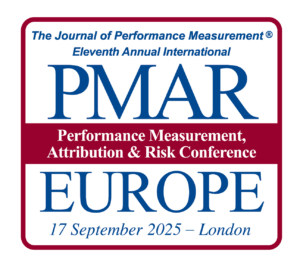GIPS® Tips
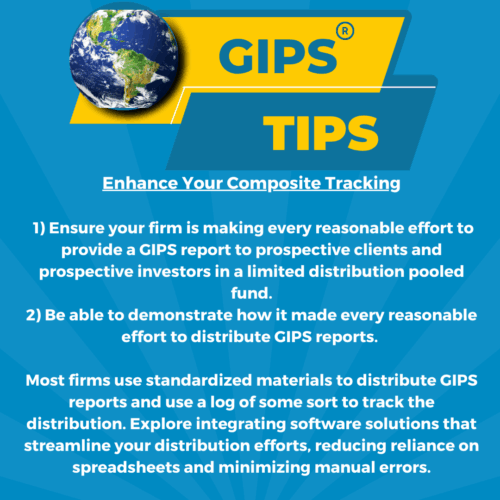
Experience “White Glove” GIPS Standards Verification With TSG
Are you tired of being treated like just another number by your GIPS verifier? At TSG, we prioritize your satisfaction and success above all else.
Partnering with us means gaining access to a team of seasoned GIPS specialists dedicated to delivering unparalleled service and exceptional value. Whether you’re seeking a new verifier, preparing for your initial verification, or just starting to explore GIPS compliance, TSG is the best choice.
Why Choose TSG?
Unmatched Expertise: Our experienced team brings unmatched proficiency in the GIPS standards, ensuring thorough and efficient (not “never-ending”) verifications.
Personalized Support: We understand that the journey toward GIPS compliance is complex. That’s why we offer ongoing support and guidance as needed, as well as access to a suite of exclusive proprietary tools, designed to make compliance and verification as easy as possible for you and your firm.
Actionable Insights: When you choose TSG, you will work with ONLY highly experienced senior-level GIPS and performance specialists. Their expertise translates into actionable advice, helping you navigate the complexities of the Standards in the most ideal way for your firm.
Hassle-Free Experience: At TSG, we guarantee your satisfaction and we do not lock our clients into long-term contracts.
Ready to Experience the TSG Difference?
Take the first step toward a better GIPS standards verification. Schedule a call or request a no-obligation proposal today at GIPSStandardsVerifications.com.
The Journal of Performance Measurement®
This month’s article brief spotlights “Process-Based Attribution: Getting to the Heart of Value Add” by Jose Michaelraj of Meradia, which was published in the Spring 2025 issue of The Journal of Performance Measurement. You can access this article by subscribing (for free) to The Journal (link here).
Our previous papers in the asset owner series dealt with a variety of topics in the performance value chain. The first paper discussed valuation challenges posed by higher allocations to private markets, external asset management, and managing multiple books of record. Our second explored multiple return methodologies to provide meaningful performance returns. In the third outing, we highlighted how a GIPS framework enables complete & reliable data for the CIO and risk office. In this final part, we discuss the challenges faced by utilizing conventional models for total fund attribution and recommend a framework that integrates policy weights and process-based attribution.
To confirm your email address, click the graphic below. If you’re a subscriber but haven’t received a link to the current issue, please reach out to Doug Spaulding at DougSpaulding@TSGperformance.com.
PUZZLE TIME
Here’s another puzzle, from Harvard’s admissions exam from 1869:
The Watch, Chain, and Locket Problem:
A man bought a watch, a chain, and a locket for $216. The watch and locket together cost three times as much as the chain. The chain and locket together cost half as much as the watch. The task is to find the individual cost of each item
Submit your responses to PFowler@TSGPerformance.com
Since some of our readers enjoy a good challenge, we shared a set of puzzles in our last two issues and invited you to test your skills. Here are the solutions to those puzzles.
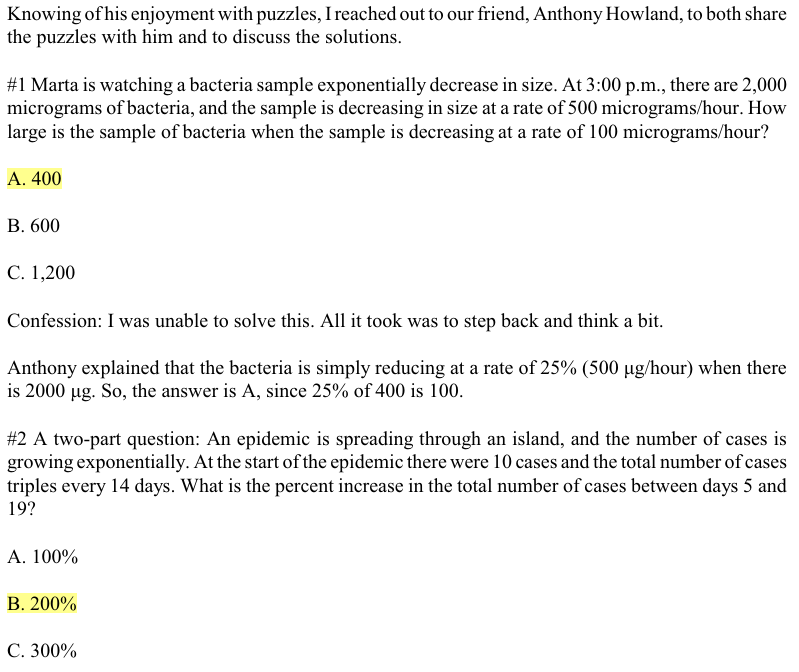
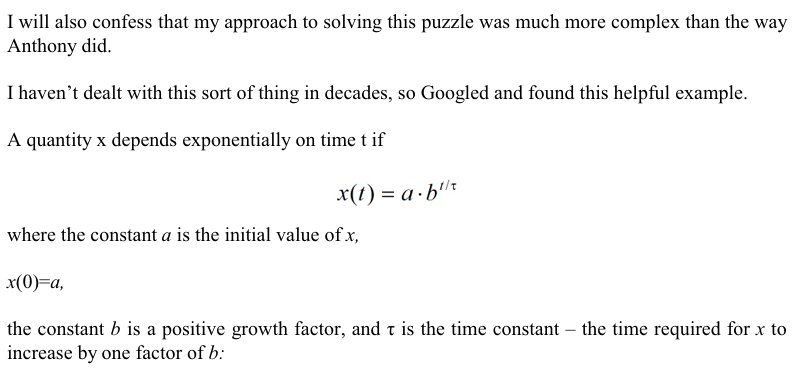
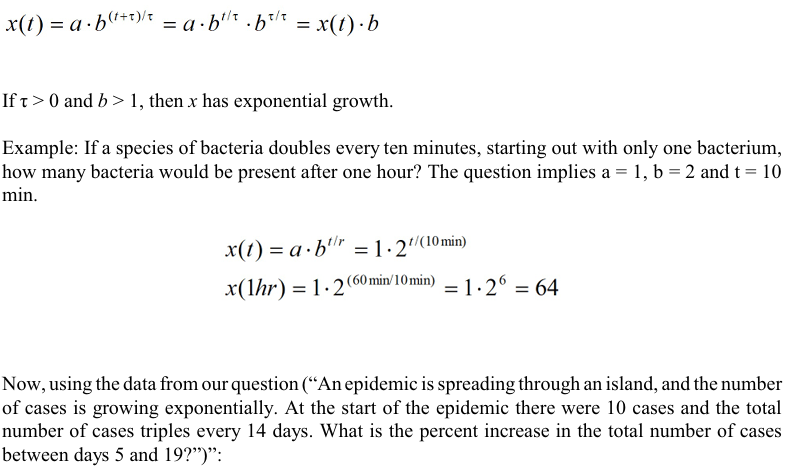


Explanation by David Spaulding, DPS, CIPM
Upcoming Webinars / Surveys
In Case You Missed It…
Webinar Replay: Should Your Firm Pursue GIPS® Compliance and Verification?
Webinar Replay: Recently Published SEC Marketing Rule FAQ
Article Submissions
The Journal of Performance Measurement® Is Currently Accepting Article Submissions
The Journal of Performance Measurement is currently accepting article submissions on topics including performance measurement, risk, ESG, AI, and attribution. We are particularly interested in articles that cover practical performance issues and solutions that performance professionals face every day. All articles are subject to a double-blind review process before being approved for publication. White papers will also be considered. For more information and to receive our manuscript guidelines, please contact Douglas Spaulding at DougSpaulding@TSGperformance.com.
Submission deadlines
Fall Issue: October 13, 2025
Winter Issue: January 12, 2026
For any questions, please reach out to Doug Spaulding at DougSpaulding@TSGperformance.com.
Book Review
A Little Life, by Hanya Yanagihara
Review by Douglas Spaulding

“Friendship was witnessing another’s slow drip of miseries, and long bouts of boredom, and occasional triumphs. It was a feeling of having been chosen, and of being grateful for that choice.” -Hanya Yanagihara
Ten years ago, Hanya Yanagihara’s novel, A Little Life, was published and I finally read it earlier this summer. A Little Life follows four college friends (Jude, Willem, JB, and Malcolm) through their ups and downs in New York City. They meet in college and quickly form an inseparable bond that spans nearly four decades.
The 832-page book took me two months to read, and I laughed exactly once. I think it qualifies as an epic novel due to its length and the fact that it follows characters over several decades, and deals with themes such as suffering, friendship, identity, profound love, and endurance.
A few times, I came close to putting the book down for good, but what kept me going was the love that surrounds Jude, a highly successful lawyer with a traumatic past. I was inspired by Jude’s journey, his will to survive, and his efforts to overcome his past. Abandoned as a baby and subjected to severe abuse from childhood, Jude struggles with guilt, shame, self-harm, and profound emotional pain throughout the story. But those around Jude lift him up in beautiful ways, guide him, keep him close and safe, and never give up on him. With my focus on friendship, love, brotherhood, and eventual romance, I was able to push through to the end. While it was a devastating and gut-wrenching journey, I felt rewarded when I finally closed the book. The exploration of human endurance was worth it, and these characters came to life in a way that will leave a lasting impression.
Few books have had such an intense emotional impact on me. The Diary of Anne Frank, Elie Wiesel’s Night, and The Fault in Our Stars come to mind. I can give this novel five stars, but I can’t recommend it, because I think the reader needs to discover this one on their own when the time is right. If you’ve read A Little Life, I’d love to discuss it. Please feel free to contact me at DougSpaulding@TSGperformance.com.
Issue Contents:
The Voice
Five Questions with a TSG Verifier
This month, we’re introducing a new feature in the Performance Perspectives “Voice” section: a series of interviews conducted by our intern, Jesse Teller, a finance major from Ursinus College. Each month, Jesse will sit down with one of TSG’s senior verifiers to ask five questions, ranging from how they got started in the field to their perspectives on the industry’s future. The goal is to give our readers a personal look at the professionals behind TSG’s verification and consulting work, and to share lessons learned from years in the industry.
Our first interview is with Ashley Reeves, CIPM, who talks about discovering performance measurement as a career, how AI and automation are changing the profession, and why communication skills matter just as much as technical expertise. She also shares a real-world problem-solving story from a challenging GIPS verification and offers advice to students considering this career path.
“With persistence, problem-solving, and clear communication, even the biggest challenges become manageable.” — Ashley Reeves, CIPM
How did you decide on a career in performance measurement, and why TSG?
Like many people in this field, I didn’t start out knowing “performance measurement” was even a career path. My background in finance led me toward analytical roles, and once I was introduced to the GIPS standards and the broader world of investment performance, I found it more interesting than any other work I was doing. I enjoy the mix of technical detail, problem-solving, and client interaction that the work requires.
I joined TSG because of its thought leadership in the industry. The team’s depth of expertise and collaborative spirit made it clear this was the right place for me.
How do you think the progression of AI or automation will impact this field in the foreseeable future?
AI and automation are likely to reshape the way we handle data analysis, error detection, and even parts of the verification process. Tasks that are repetitive or data-heavy will become more streamlined, allowing verifiers to focus on judgment-based work and client advisory and support services. I see it as an opportunity to work smarter, not as a threat to the core of what we do.
What has been the most challenging client engagement or task you’ve faced in a GIPS verification? How did you approach and resolve the issue, and what did you take away from the experience?
One that stands out involved a client many years ago whose historical records were missing chunks of data due to an old system migration. We tackled it together step-by-step, working through the requirements for recordkeeping for both regulatory and GIPS standards compliance purposes, identifying exactly what was missing, hunting for alternative records, and looping in their custodian to recover whatever we could. In the end, the client was able to gather enough information to move forward. It was a reminder that with persistence, problem-solving, and clear communication, a problem can be turned into a manageable hurdle.
What is one thing you wish you had known before starting your career in performance measurement?
That communication skills are just as important as technical skills. It’s one thing to understand the math and the GIPS standards, but another to explain them in a way that makes sense to people with different levels of familiarity. Being able to translate complex rules into practical, everyday steps is a huge part of the job.
What advice would you give to a college student without prior experience in performance measurement?
Stay curious and be willing to learn. This is a specialized field, but the skills you need build on a strong foundation in finance and communication. Seek internships or projects that let you work with investment data, even if they’re not directly in performance measurement. And connect with people in the industry. You’d be surprised how often careers start with a simple introduction.
Quote of the Month
“The measure of a man’s success in life is not the money he’s made, it’s the kind of family he has raised.”
– Joseph P. Kennedy, Sr.
Industry Dates and Conferences
Celebrating 35 Years of Excellence: What to Expect from TSG in 2025
As TSG marks its 35th anniversary, we’re thrilled to announce a dynamic lineup of events, learning opportunities, and networking activities designed to elevate your performance measurement expertise and strengthen our vibrant community. Here’s what’s in store for the year ahead:
September: PMAR Europe in London
- September 17th: PMAR Europe – London’s premier event for innovation and networking.
This is the European counterpart to our North American event, focusing on cutting-edge topics and innovations.
October: Come See Us (First Rate Wealth Tech)
- October 16th: First Rate’s Wealth Tech Conference – John D. Simpson will be hosting a roundtable on After-Tax Benchmarks.
November: Fall EMEA Forum in Copenhagen
- November 6th-7th: Performance Measurement Forum (EMEA) – Copenhagen, Denmark – Expand your perspective with insights from global leaders at our fall meeting in Denmark.
- November 11th-12th: GIPS Annual Conference – Phoenix, AZ
December: Year-End Wrap-Up in Louisville
Conclude 2025 with these essential events:
- December 3rd: Fall Asset Owner Roundtable (AORT) – Louisville, KY – Advanced discussions to round out the year.
- December 4th-5th: Fall North American Forum – Louisville, KY – Close the year with innovation and collaboration.
Celebrating 35 Years of Excellence
- We take immense pride in our legacy of success, innovation, and leadership. As we look ahead, TSG remains committed to advancing the field of investment performance measurement and empowering professionals worldwide.
Mark Your Calendars! Let’s make 2025 a year to remember.
For information on the 2025/2026 events and membership opportunities, please contact Patrick Fowler at 732-873-5700.
Institute / Training
Inside the Institute: A Fresh Perspective
Module 3: Return Attribution
By Jesse Teller
Module Three Reflection – Return Attribution
Module Three of the Fundamentals of Performance Measurement course took us deeper into the world of return attribution, and this time, John was at the helm. His instructional style was more traditional and lecture-based than the previous modules, which actually felt familiar to me, much like the classroom settings I’m used to in college. While the delivery was straightforward and organized, the material itself was definitely a step up in complexity.
The session expanded on attribution by introducing multi-level attribution, a method for breaking down performance across multiple layers of a portfolio. This meant going beyond the simple allocation-versus-selection split and examining results at progressively deeper levels. Through nested attribution, we learned how performance could be analyzed from asset class, down to sector, subsector, and even individual security levels. It felt a bit like zooming in on a map until you could see the street where each return came from.
We also covered balanced attribution, which blends allocation and selection effects across asset classes. This is particularly valuable for mixed portfolios, where decisions about what to invest in and how much to allocate can interact in ways that make it hard to separate their contributions. Balanced attribution allows both effects to be viewed together, providing a more complete picture.
One section I found especially eye-opening was multi-currency attribution. For globally diversified portfolios, currency movements can significantly impact returns, sometimes in ways unrelated to the underlying assets themselves. John showed how attribution can separate currency effects from the performance of the securities, as well as how hedging strategies influence the outcome. It was a reminder that global investing is about more than just security selection; the FX market is a major player, too.
A key insight from this module was the importance of identifying additional attributes beyond allocation and selection that can influence returns. Factors like style, region, or even duration can tell parts of the story that would otherwise be missed. This was also where the complexity of attribution became clear, because more detail means more room for discrepancies.
John pointed out a critical limitation of multi-level attribution: the potential mismatch between single-factor attribution results at higher levels and the summed effects from lower levels. If not addressed, this disconnect can lead to misleading conclusions. The solution lies in using a structured and consistent approach, ensuring all layers of the analysis work together without contradiction.
While the content was more challenging than the first two modules, I appreciated how logically it was presented. The slides built on one another in a way that made the progression clear, even if some technical points required a second read. John’s methodical explanations and worked examples helped bridge the gap between theory and application.
Overall, Module Three was a valuable deep dive into attribution. It introduced me to the tools needed to analyze complex, multi-layered portfolios and emphasized the importance of structure, consistency, and context. Even with its higher level of difficulty, the module felt like an important step forward in understanding how to break down returns and tell the real story behind performance numbers.
Compliance Corner
Webinar replay: SEC Marketing Rule FAQs with Lance Dial, Partner, K&L Gates and David Spaulding, DPS, CIPM, TSG Listen as Lance and Dave dive into issues that have challenged advisors since the rule went into effect.
They focus on the SEC’s recently published guidance, addressing:
- Extracted Performance
- What Constitutes Performance (including risk, yield, contribution, and attribution)
- Methodology for Calculating Gross and Net Returns
They walk through each area and unpack the implications for your firm while sharing practical insights to help you align your performance reporting with regulatory expectations. Click Here to Access the Recording.
ATTN: TSG Verification Clients
As a reminder, all TSG verification clients receive full, unlimited access to our Insiders.TSGperformance.com site filled with tools, templates, checklists, and educational materials designed to make compliance and verification as easy as possible for you and your firm.
Contact CSpaulding@TSGperformance.com if you have any questions or are having trouble accessing the site.
TSG Milestones
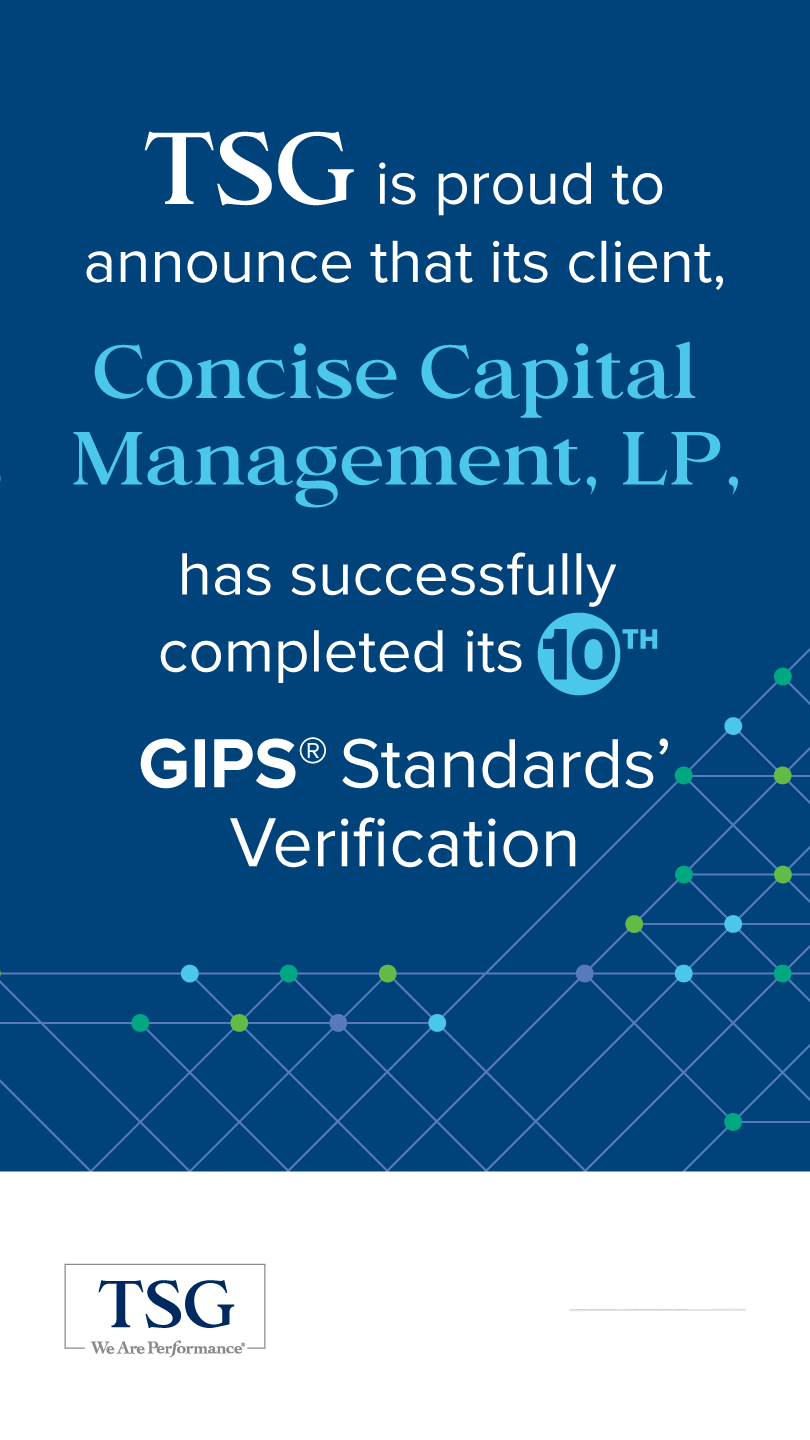
In The News
The One-Day Event Built for European Performance Measurement Professionals
PMAR Europe Conference Agenda
8:00 AM – 8:45 AM
Registration & Continental Breakfast
Vendor showcase, and networking opportunities.
8:45 AM – 9:00 AM
Welcome Address
David Spaulding, DPS, CIPM, TSG
Overview of the conference themes and goals.
9:00 AM – 10:00 AM
Performance Analytics Technology and AI in 2025
Panel discussion featuring experts on leveraging AI and advanced technologies in performance measurement.
Moderator: Chris Spaulding, TSG
Panelists: Ian Thompson, Ph.D., BNY; Alex Serman, First Rate; Paul Farrar, Railpen
10:00 AM – 10:45 AM
2024 Dietz Award Winning Article
Speaker: Robin Monbaliu, CFA, Ortec Finance
10:45 AM – 11:15 AM
Morning Break
Networking with coffee and refreshments.
11:15 AM – 12:00 PM
Risk Modeling
Speaker: Dan diBartolomeo, Northfield
Advances in risk modeling techniques and their implications.
12:00 PM – 13:00 PM
Networking Lunch
Enjoy a buffet lunch and connect with fellow professionals.
13:00 PM – 13:45 PM
Data Management in Performance Measurement
Moderator: Patrick W. Fowler, TSG
Panelists: Steve O’Brien, Rimes; Louise Head, Federated Investors
Key techniques for sourcing, cleaning, and managing data for performance analysis.
13:45 PM – 14:30 PM
Performance Measurement for Private Markets
Speaker: Karina Tanny, CFA, State Street
Insights into performance measurement of private markets and the use of derivatives.
14:30 PM – 15:00 PM
Afternoon Break
Light snacks and beverages available.
15:00 PM – 15:45 PM
Practical Application of Long/Short Portfolio Calculations
Speaker: John D. Simpson, CIPM, TSG
In-depth techniques for calculating performance measurement on long/short portfolios.
15:45 PM – 16:30 PM
Surprises in Performance Measurement
David D. Spaulding, DPS, CIPM, TSG
16:30 PM – 17:00 PM
Interactive Session: Performance Trivia
Engage in a fun and educational quiz testing performance measurement knowledge.
17:00 PM – 18:00 PM
Closing Reception
Drinks, hors d’oeuvres, and networking opportunities to conclude the event.
GIPS® is a registered trademark owned by CFA Institute. CFA Institute does not endorse or promote this organization, nor does it warrant the accuracy or quality of the content contained herein.
